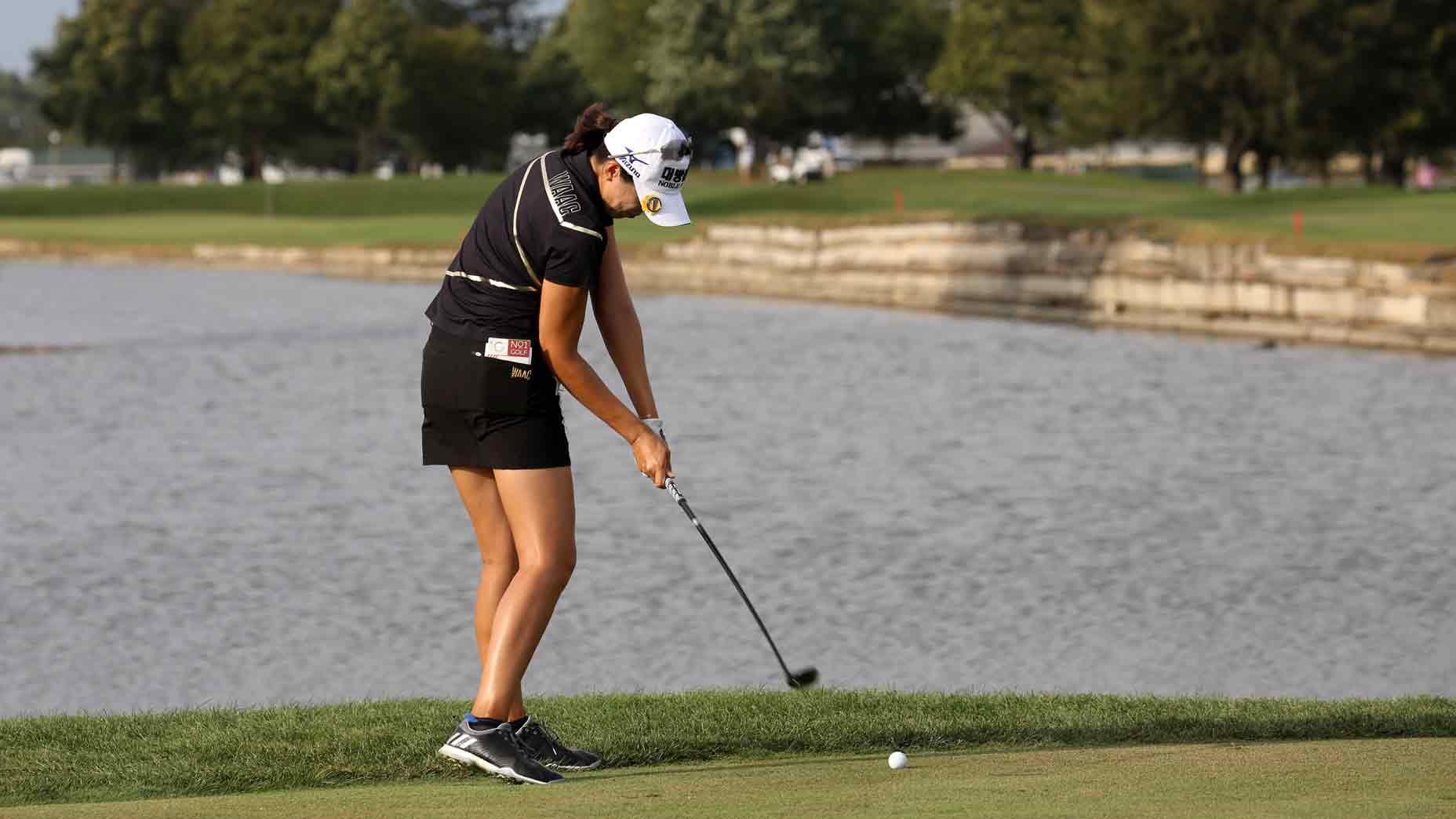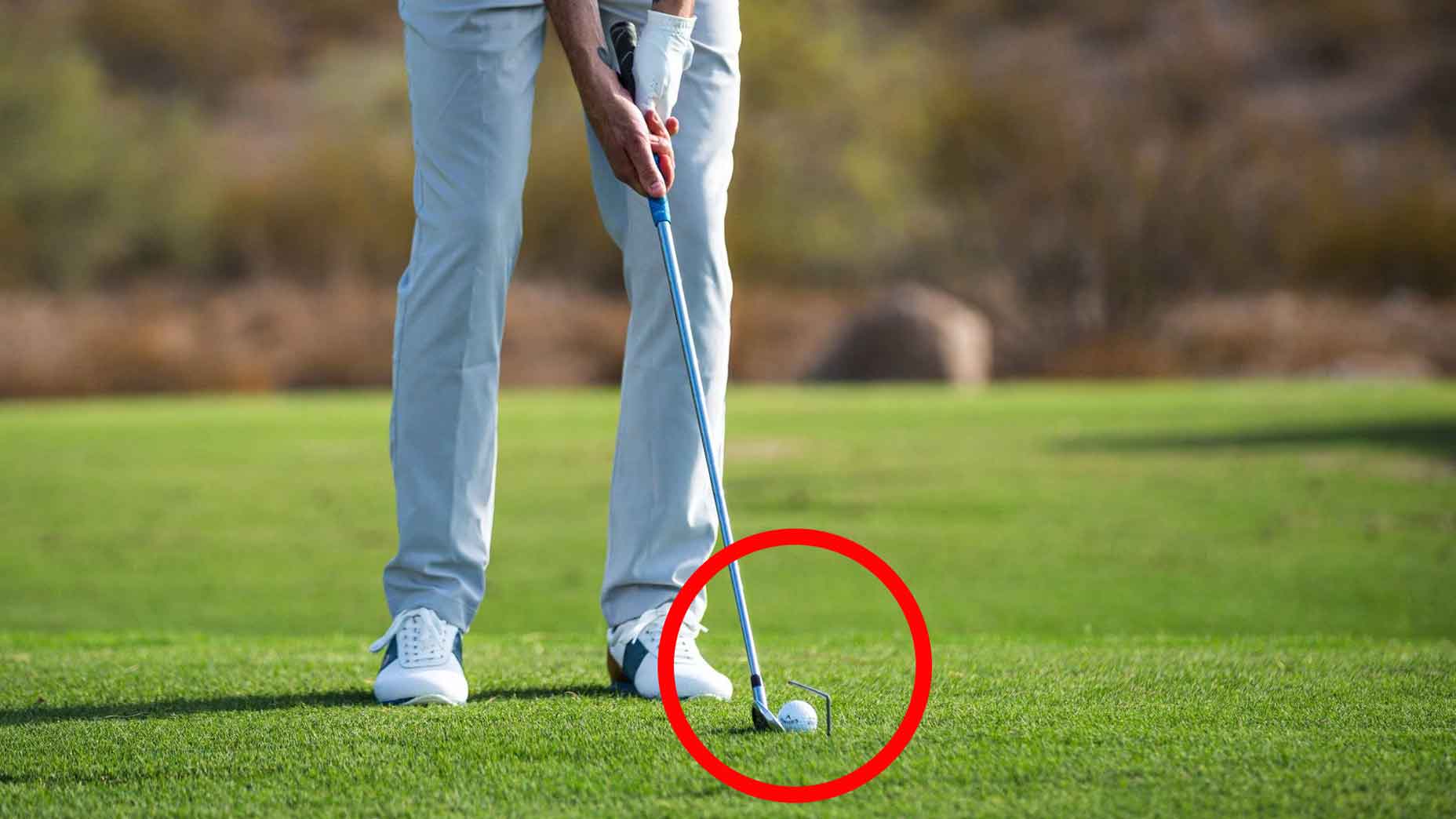Every golfer thinks that more practice will instantly lead to better scores — but that’s only one small part of the equation. If you’re really looking to improve, you need to work harder and smarter, utilizing good course management skills that match your game.
While better technique and improved ball-striking will you help play your best, better processes will give you better odds at scoring lower. So take a look below at 10 ways to instantly lower your score by limiting risk.
10 ways to improve your course management skills

True Spec Fitting
1. Get your tee shot in play early in the round
A lot of golfers have first-tee nerves, and nothing beats them better than getting your first tee shot in play.
Instead of hoping you crush your drive, why not try to find the widest landing area, aim for that, and hope you execute the strategy? I suggest playing conservatively from off the tee early on, which can help your success and momentum.
2. Hit fairway shots with a club you love
When facing a lengthy second shot, many amateur golfers assume they should use their longest club from the fairway. Don’t fall into that trap. Instead, take the club you love (a 7-wood or even a hybrid) and swing with confidence. Comfort is almost always preferable.
3. As you change clubs, take a practice swing
We’re constantly changing club lengths on the course due to different distances and targets.
And since we’re switching clubs so frequently on the course, I suggest taking time for a practice swing. Focus on learning the low point of the club, which can help you avoid fat or thin shots.
4. Know your yardages
Way too many amateur golfers don’t know their carry distances with each club. How can you confidently hit a shot 125 yards when you’re not sure which club is your 125-yard option?
Ideally, you should know how far the ball travels in total (including roll), but simply knowing your carry yardages is the first step to improving your course management skills.
For instance, when you know you’ve got a club that can carry a bunker or a hazard, you can set up to your shot without trying to swing too hard, and focus on making ball-first contact.
5. Use a GPS app
Have you ever played a new course and hit the ball into a hazard you didn’t know was there? I’m pretty sure every golfer has before. But using a GPS app takes all the guesswork out of strategizing for a shot, and almost acts like a personalized caddie on your phone.
I suggest using either Golflogix or the USGA GHIN app, since both are simple to use and can suggest club choices for distances on each shot.
6. Play the percentages into the greens
This is something that every amateur golfer needs to hear: Not all pin placements are created the same. My advice? As you approach a green, consider your odds.
If 50 percent of the area around the green is sand, consider playing to the part of the green that’s 75 percent grass and only 25 percent sand. Look for the areas that will keep the ball on the putting surface, even if it leaves you with a longer putt.
Also, don’t be discouraged if your ball doesn’t make or hold the putting surface. By landing in the short grass around the green, you should still have a good shot to chip, pitch, flop, or even Texas Wedge your next shot — which is better than trying to hit from a deep bunker or thick grass.
7. Avoid short game shots that require a big swing
The smaller the swing, the smaller the chance of error. This can be particularly true on short-game shots. Sure, taking a big swing to hit a beautiful flop shot can be fun, but if you miss, it can be deadly to your scorecard.
Always consider using a less-lofted club with a smaller stroke motion to limit the size of the error.
8. Avoid the risk of hazards
No golfer wants to play from hazards. One way to better your course management skills is to avoid these risks altogether.
Play the odds by aiming to larger targets, which may not always maximize distance on each shot, but will help you play smart and safe golf to avoid big numbers.
9. Try walking out your putts to gauge distance
Dialing in your distance control in putting is huge. Consider walking out your putts to feel what the ball will do on the green.
Be aware of pace of play, of course. But by walking your putts, you can have a better sense of how to strategize around the green.
10. Hit approach shots with high-percentage wedges
By improving your short game, you’ll almost instantly see lower scores.
Controlling distance through your club selection can quickly drop scores and handicaps by leaving your ball closer to the hole.
I suggest getting comfortable at taking less than full swings with your wedges, which give you a sense for both distance and spin.
Looking for more golf content? Give me a follow on Instagram to get tips and playing advice.

Voice Caddie VC4 Golf GPS
View Product











